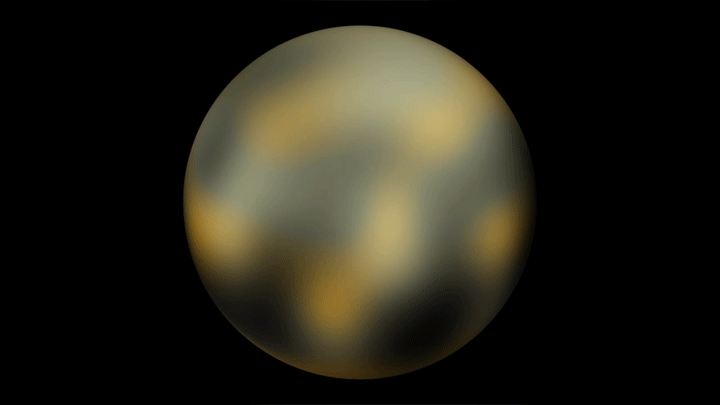Well, to be accurate the International Astronomical Union (IAU) needs your help, but it’s about Pluto.
This is a great way people can get involved in planetary science without an advance degree, powerful telescope or even leaving the comfort of their homes: Help the IAU put together a list of potential names for features on Pluto and its largest moon, Charon.
Why now?
This summer, the New Horizons spacecraft is going to fly past these two mysterious celestial objects. The IAU wants a ready list of names for the craters, plains, mountains, valleys, rifts and whatever else we see on Pluto and Charon.
The Hubble Space Telescope – the magical window to the universe that has brought us breath-taking images of galaxies, nebula, star clusters and more – is unable to provide a detailed image of distant Pluto. Pluto is too small, too far away and too dimly lit.
That’s where New Horizons comes into play. Launched in 2006, New Horizons has been sailing through space towards a rendezvous with Pluto since before Pluto was demoted to dwarf planet status.
After a gravity assist by Jupiter, the spacecraft is zipping along at a million miles per day. Pluto is a long way from Earth so, even at that rate, it’s taken over ten years to get there.
The spacecraft will pass within 8,000 miles of Pluto and should provide an array of detailed high-resolution images.
The IAU would like your help in developing a list of potential names for the features of Pluto and Charon that are about to be discovered. They have a list of nominees that people can vote on broken down by categories and sub-categories:
History of Exploration
Historic Explorers: those who pioneered the exploration of the land, sea and sky.
Space Missions and Spacecraft: the launch vehicles that have carried our people and our machines into space, and the spacecraft we have used to explore the cosmos.
Scientists and Engineers: Those who have contributed to our understanding of Pluto and the solar system.
Literature of Exploration
Fictional Explorers and Travelers: The characters who have embarked on journeys in the stories we tell.
Fictional Origins and Destinations: The places they have sought and the homes they have left.
Fictional Vessels: The sailing ships, starships, and everything in between that have carried them on their journeys.
Exploration Authors and Artists: Those who have envisioned our explorations of the land, sea and space.
Mythology of the Underworld
Underworlds and Underworld Locales: The deep, dark places of mystery and death, as imagined in all the cultures of the world.
Travelers to the Underworld: The intrepid travelers who have ventured into the underworld and (sometimes) returned.
Underworld Beings: The deities, demons and denizens of the underworld in our stories.
If you’re not fully satisfied with the list of nominations, you can submit your own ideas.
I have already done so – under the category Literature of Exploration: Fictional Explorers and Travelers. I nominated Tom Swift – the central character in a long series of books about science and adventure. I think I read all of them when I was a kid and they helped inspire a life-long love of science.
We will submit some worthy suggestions as a school later this week. Stay tuned in your science class.
Put your thinking cap on and come up with your own ideas – get involved.

I think something should be named 'The Little Prince' or Antoine de Saint-Exupéry. -RM
ReplyDelete